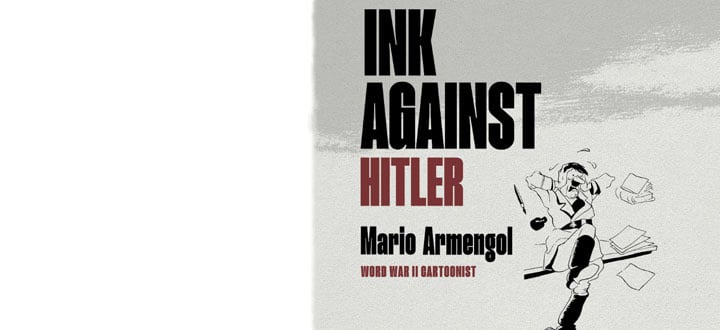Commented works: Transfers and Exchanges
01 - Scenes of the Plagues of Egypt in the Hagadá Rylands
1335-40. Illuminated parchment
The folios on display illustrate Moses and Aaron’s meeting with the Pharoah and the first three plagues that were unleashed on Egypt: water turned to blood, frogs and mosquitos. The illuminated haggadot begin with a cycle from Genesis and Exodus and end with the Seder scenes. They draw a direct line between biblical time and the medieval present, stressing the unchanging status of the ritual and the continuity of Judaism.
COURTESY OF THE UNIVERSITY OF MANCHESTER
THE JOHN RYLANDS RESEARCH INSTITUTE AND LIBRARY, MANCHESTER. HEBREW MS. 6
02 - Jewish Passover Scenes from the Golden Haggadah
1320–30. Illuminated parchment
The image of Miriam, accompanied by maidens dancing and playing musical instruments, recalls the Song of the Sea recited after the Crossing of the Red Sea. It is followed by ritual scenes of the Seder, such as the distribution of matzot and haroset, the cleaning of the house and the slaughtering of the paschal lambs. The delicate faces and fashionable hairstyles of the Jewish protagonists resemble those of Christian figures in courtly Parisian manuscripts of the same period.
The British Library, Londres. Add MS. 27210
03 - Matzah in the Barcelona Haggadah
c. 1340. Illuminated parchment
To commemorate the Israelites’ suffering and deliverance from slavery in Egypt, matzah (unleavened bread), maror (bitter herbs) and haroset (a sweet paste made from nuts and fruits) are eaten at the Seder feast. A frequent iconographic choice in haggadot is the depiction of matzot as exceptionally large circumferences. Here it is accompanied by a group of musicians similar to the jongleurs and acrobats found in Christian manuscripts. A specifically Jewish symbol thus gives rise to an expression of courtly culture that must also have fascinated the book’s prosperous Jewish owner.
The British Library, Londres. Add MS. 14761
04 - Domingo Ram (act. in Aragon)
The Angel appearing to Zacharias
c. 1470. Tempera and gold leaf on panel
Zacharias's rich robes with hanging bells are characteristic of the high priest, the only person allowed inside the inner sanctuary of the Temple during the feast of Yom Kippur. The striking gold chain attached to his leg is held by another priest, who is entrusted with extracting the high priest's body if he dies during the sacred ritual. This exceptional iconographic detail reveals knowledge of an unusual postbiblical Jewish rite.
The Cloisters Collection, 1925
The Metropolitan Museum of Art, Nova York
05 - Jaume Huguet (act. in Catalonia)
Lot fleeing from Sodom and Exodus from Egypt
(from the retable of Saint Bernardino of Siena and the Guardian Angel)
1462–75. Oil on panel
Moses leads the Israelites across the Red Sea. His head is draped in a striped garment, probably a tallit or prayer shawl worn by Jews. Although in the Ashkenazi Jewish traditions of northern and central Europe the tallit was donned exclusively for prayer, on the Iberian Peninsula it continued to be used in non-ritual contexts as well.
Private collection
06 - Follower of Bernat Martorell (act. in Catalonia)
Christ among the Doctors
c.1420-40. Tempera and gold leaf on panel
The rectangular space of the Temple, where Jesus meets the studious Jewish teachers, displays several parallels with Iberian medieval synagogues. These include the position of the wooden benches for the faithful at the sides, the glass lamps that provide lighting, and the bimah or elevated pulpit reached by steps from which the Torah was read to those in attendance.
The Friedsam Collection, llegat Michael Friedsam, 1931
The Metropolitan Museum of Art, Nova York
07 - Pere Vall (act. in Catalonia)
Moses receiving the Tablets of the Law
c. 1410. Tempera and gold leaf on panel
The hexagonal halo not only stresses Moses' holiness but also distinguishes him from the Jews who are worshiping the golden calf, characterised by the red badge on their chests. In contrast to the positive depiction of the prophet, the idolatrous Jews are signalled by this discriminatory symbol which, together with the hooded cloak, became a recurring visual device in Christian works for identifying Jews at first sight.
Private collection
08 - Master of La Sisla (act. in Toledo)
The Circumcision
c.1500. Oil on panel transferred to canvas
The Gothic architecture of the temple, the high priest dressed in bishop's vestments and the presence of an altar transform the Circumcision of Jesus in the Temple of Jerusalem into a Catholic liturgical ceremony. The Christian artists reinterpreted the Gospel episode as a demonstration of Christ's humanity and a prefiguration of his redemptive sacrifice on the cross. A traditional Jewish ritual was thus redefined as a fundamental moment within Christian salvific history.
Museo Nacional del Prado, Madrid
09 - Nicolás and Martín Zahortiga (act. in Aragon)
Expulsion of Saint Joaquim and Saint Anne from the Temple (from the retable of Santa
María de Borja)
1465–77. Oil on panel
The scene takes place in a synagogue, as indicated by the Torah case (tik), depicted as a precious piece of Christian Gothic gold work. Joachim displays an octagonal halo, used to distinguish Jewish figures venerated by Christians. In contrast, his wife Anne, who according to the doctrine became the immaculate vessel for Mary, Jesus' mother, has a circular halo like that of sacred Christian figures.
Museo de la Colegiata de Santa María, Borja (ZARAGOZA)
10 - Jewish necklace with apotropaic amulets from Les Roquetes (act. in Toledo)
c. 1350. Glass paste, jet, horn, coral, silver, bronze, glass and rock crystal
This necklace belonged to a Jewish child killed in 1348 during the attack on Tàrrega's Jewish district, whose remains show that he suffered from a malformation of the legs. The materials of the pendants, among them the hand of Fatima, indicate that it was an apotropaic object designed to protect the wearer. Jews, Christians and Muslims believed that these amulets served to guard against the evil eye. It is a good example of interculturality.
Museu Tàrrega Urgell, Tárrega (Lérida)










